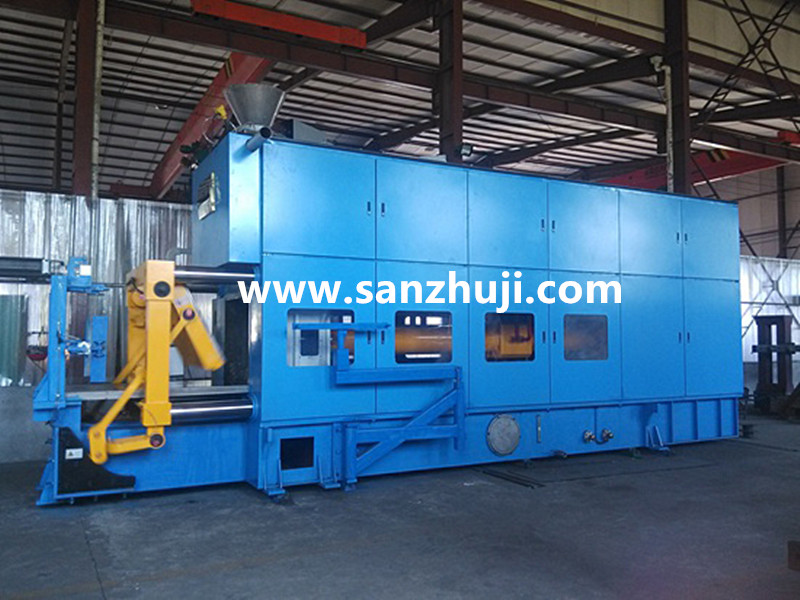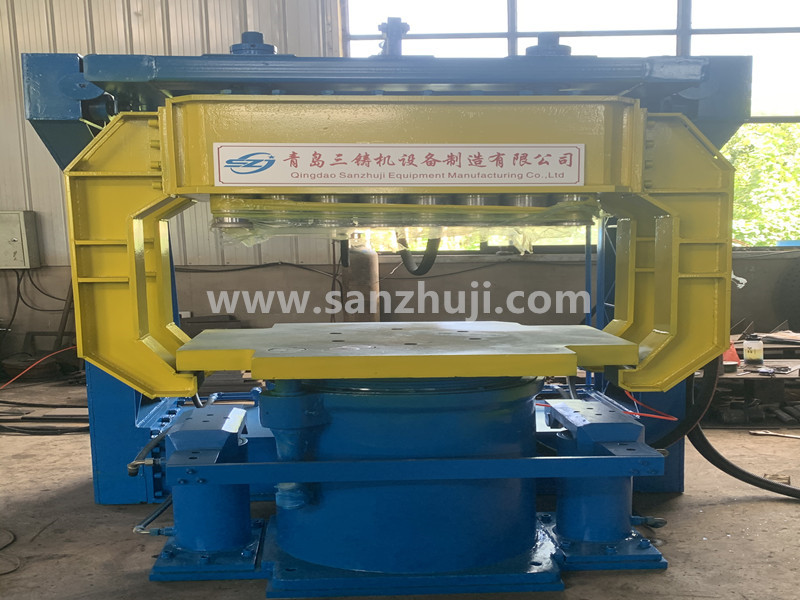Because no-bake resin sand casting has the advantages of good surface quality, high dimensional accuracy, low scrap rate, wide application range, low technical level of workers, greatly reducing the labor intensity of workers and improving the working environment, so More and more domestic companies (or enterprises) choose no-bake resin sand casting methods. Although no-bake resin sand casting technology has matured, there are still many problems in the production process.
In the casting production process of no-bake resin sand, the following issues need to be paid attention to.
1. Always pay attention to the operation of the equipment
The operating condition of the equipment directly affects the cost of casting production and the quality of castings. Therefore, in casting production, we must always pay attention to the operating conditions of the equipment, and analyze and solve abnormal operation in time, focusing on the following two aspects:
1.1 Pay attention to the operation of dust removal equipment.
The quality of dust removal equipment directly affects the regeneration cost of reclaimed sand and the quality of castings. In casting production, abnormal operation of dust removal equipment is often difficult to find, but if the dust removal effect of dust removal equipment is not good, it will not only affect the working environment and pollute the air. More importantly, it affects the fine powder content of reclaimed sand. The direct result is an increase in the amount of resin added during sand mixing and an increase in casting rejection rate due to poor air permeability.
1.2 Pay attention to the operation of sand mixing equipment.
Whether the sand mixer can operate normally has a direct impact on the quality of sand mixing, and the amount of liquid material (resin, curing agent) added is the most critical. In general, the amount of resin added is achieved by controlling the voltage of the gear pump motor, and the amount of curing agent added is achieved by controlling the voltage of the diaphragm pump motor. Due to the change of seasons and weather, the viscosity of the liquid material changes. In the case of voltage, the amount of liquid material added will fluctuate, and the curing agent is easy to crystallize, causing valve and pipeline blockage. Therefore, the liquid material pipeline should be cleaned every shift, and the amount of liquid material added should be tested every week. To ensure the accuracy of the liquid material added.
2 Pay attention to the correctness and rationality of the formulated production process
Whether the production process is reasonable or not directly affects the casting yield, casting quality and casting cost. When formulating the production process, the following items should be paid attention to:
2.1 Determine the LOI value of suitable reclaimed sand
LOI value, i.e. ignition loss, is an important indicator to measure the release rate of reclaimed sand. It is also an indicator that is closely related to the amount of gas evolution of molding sand and porosity defects in castings. Iron castings are generally produced using furan resin sand. Practice has proved that LOI value control About 3% can fully meet the production requirements, and excessively reducing the LOI value is of little significance.
2.2 Determine the appropriate casting process parameters
2.21 Determine the appropriate final strength
Generally, after no-bake resin sand is mixed, it will self-harden for about 24 hours to reach the highest strength, which is the final strength. Due to the different production conditions and production scales of various enterprises, the time interval from modeling to pouring may not exceed 24 hours, so the final strength should be determined by the enterprise. For small-scale enterprises that implement a furnace system for several days, the 24-hour final strength standard can be used; for those that do not exceed the 24-hour mold curing time, the final strength standard is the strength achieved before pouring. At the same time, there are two tendencies to overcome in production: on the one hand, blindly increase the strength to ensure quality, which increases the cost of casting and cause waste; on the other hand, lower the strength to ensure the cost, resulting in unstable quality and fluctuation range. Large, so that the quality of castings is greatly affected by raw materials and operators.
2.22 Determine the appropriate sand to iron ratio
No-bake resin sand has a lower sand content than clay sand due to its high strength, mold release after curing, and smooth parting surface, but its sand to iron ratio also has certain requirements. If the foundry sand-to-iron ratio is too high, both resin and curing agent will be wasted during the production process, and larger waste sand blocks will be produced, which will increase the burden on the reclaimer, reduce the release rate, increase the LOI value, and increase the possibility of porosity in the casting. Large; if the sand-to-iron ratio is too low, it is easy to run out of fire during pouring.
2.23 Determine the appropriate gating system
Furan resin sand has poor thermal stability. According to data, when the amount of resin added to resin sand is between 1.4% and 1.6%, its thermal stability is the best, but in general, the amount of resin added is about 1.2%. Therefore, the design principle of the pouring system is to ensure that the molten metal fills the mold cavity quickly and smoothly during the thermal stability of the resin. Therefore, when determining the pouring system, ceramic tubes should be used as much as possible, and the number of internal gates should be increased. dispersion.
3 pay attention to the choice of raw materials
The choice of raw materials has a greater impact on casting production, because the quality of raw materials affects the quality of castings on the one hand, and on the other hand, the amount of addition and consumption of various materials. To this end, the following aspects should be considered:
3.1 Selection of raw sand Raw sand is divided into ordinary sand, water-washed sand, scrubbing sand, etc. Since the mud content in scrubbing sand is already very small, it can greatly reduce the waste of resin. It should be selected first, followed by water-washed sand, but Never use untreated raw sand. When choosing molding sand, one must follow the principle of nearby selection to reduce transportation costs, and second, try to choose raw sand with low angle coefficient.
3.2 Selection of resin
The choice of resin directly affects the casting quality. If a poor quality resin is selected, it will not only increase the amount of resin added, but also affect the quality of the molding sand, resulting in more casting waste. Therefore, the choice of raw materials should not be determined based on the technical data provided by the manufacturer, but should be determined by the manufacturer. Have a good understanding of the production equipment, production process and quality control methods, and try to test the various indicators of the resin by yourself or ask the relevant reputable inspection department for inspection, or learn from the experience of similar manufacturers, or choose the reputation Good products from well-known large companies.
3.3 Selection of other raw materials Other raw materials include curing agents, coatings, adhesives, mold release agents, sealing mud sticks, etc. The selection of these raw materials should not only consider their quality issues, but also consider their matching with the main materials such as procurement , Convenient transportation and other issues. Because the impact of these raw materials on the quality of castings is not the main one, but the impact on the casting cost cannot be ignored. For example, the difference in the amount of curing agent added will not only affect the production efficiency of the molding process and affect the production cost.
The above is the experience of sanzhuji combined with the furan resin sand casting process. As long as the above aspects are paid attention to, not only can we produce castings that meet customer requirements, but also can reduce casting costs and bring development and benefits to the enterprise. The three casting machine can manufacture no-bake resin sand mixer, continuous mixer, sand reclamation equipment, vibratory shakeout, dust collector, and guests are welcome to visit the factory.
Qingdao Sanzhuji Equipment Manufacturing Co., Ltd. specializes in the production of sand reclamation equipment,foundry machines,Sand casting equipment,GS high efficiency rotary mixer,no-bake resin sand mixer,Jolt squeeze molding machine/Jolt-squeezing moulding machines,Multi- Piston Moulding Machine/Hydraulic multi-piston moulding machine,foundry molding machine,flaskless moulding machine,shot blasting machine,dust collector,according to the amount of old sand recovered Carry out plan customization, and provide sand reclamation equipment installation, commissioning, and training. Welcome guests to visit the factory.








